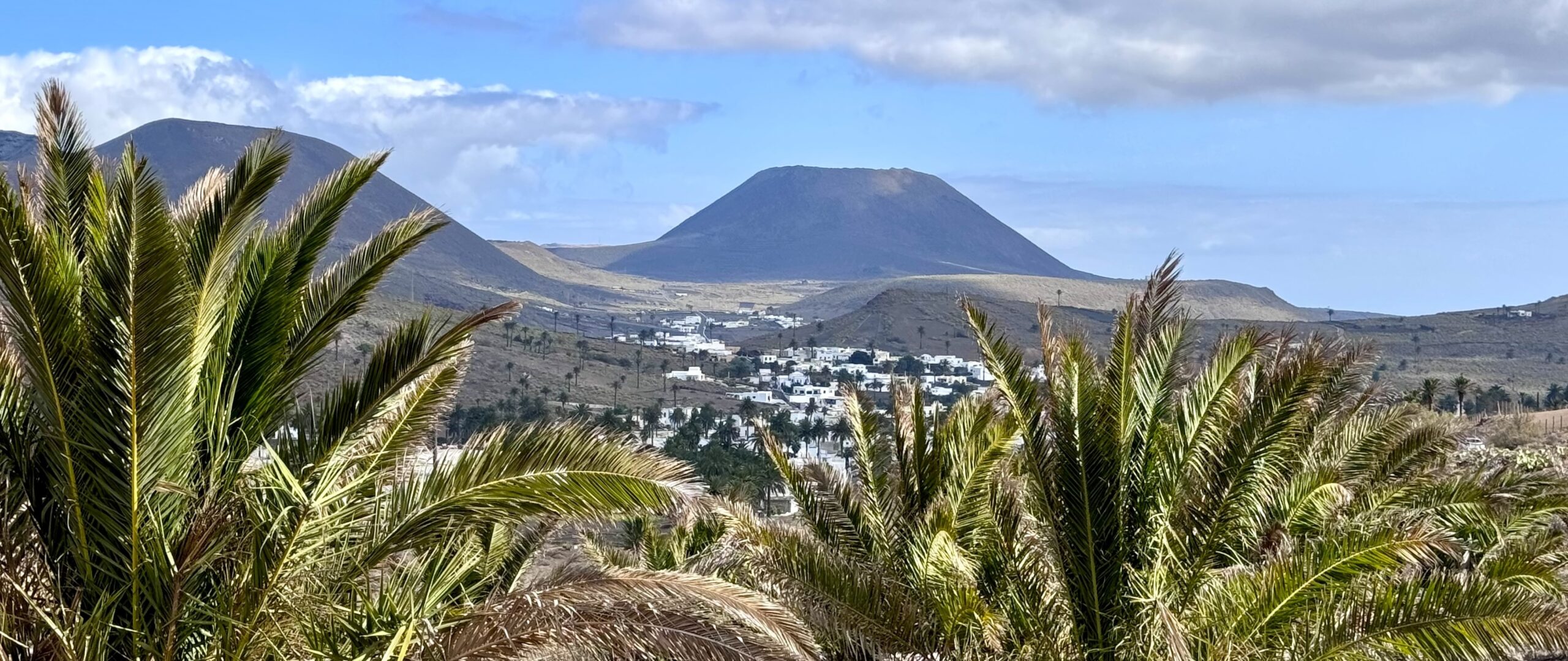In the north of Lanzarote, nestled in the valley of a thousand palms, the Green Heart of Haría is an oasis for wildlife and one of the largest collections of native plants found on Lanzarote, the most easterly of the Canary Islands. This refuge for local flora and fauna is situated within an ancient palmeral (native palm tree grove) and includes many endemic species, some found nowhere else on earth. A well established pond, home to many Canarian tree frogs, along with native plants attracting pollinating insects and a variety of trees that bring vital shade throughout the garden, create a sanctuary within this desert island, welcoming native and migratory birds. In 1986, the house at Calle La Cañada, the former fishmongers in Haría and built over a century ago, was restored by British scientist David Riebold. Preserving its square cross-section and pointed roof, a typical style of local architecture, this is one of the oldest surviving examples in Haría. Over the following four decades, the 1803m2 site has evolved from what began as David’s personal desire to create a garden for himself to become a rewilding project of significant ecological importance for the island, and one that continues to teach as it grows. In 1998 the house was listed by the island council as a site of cultural and historic importance.


